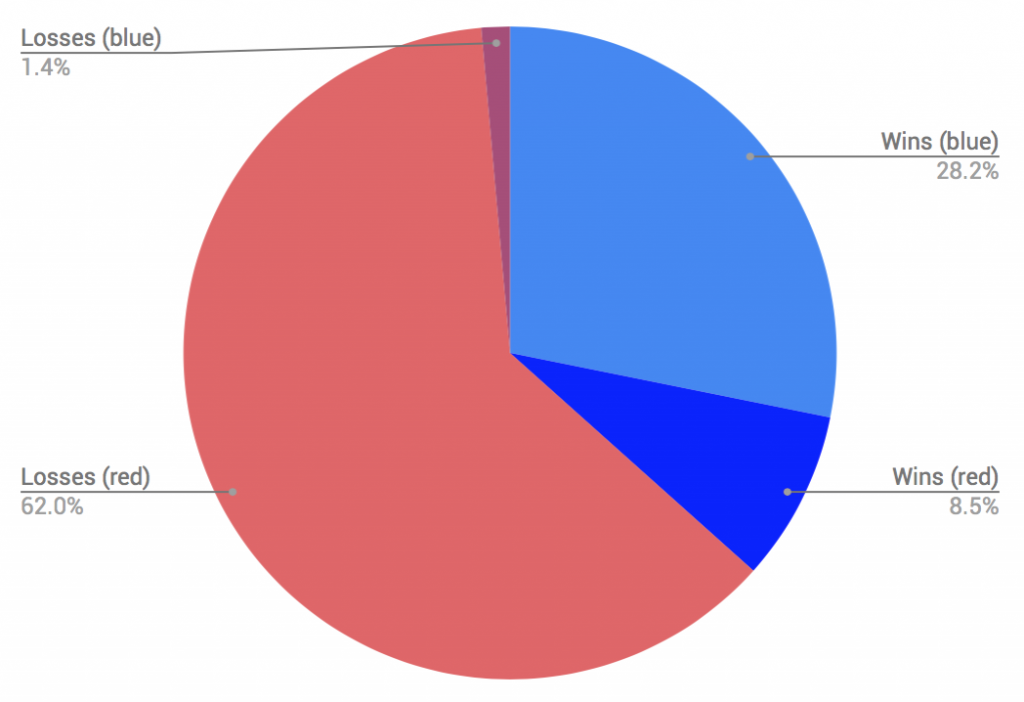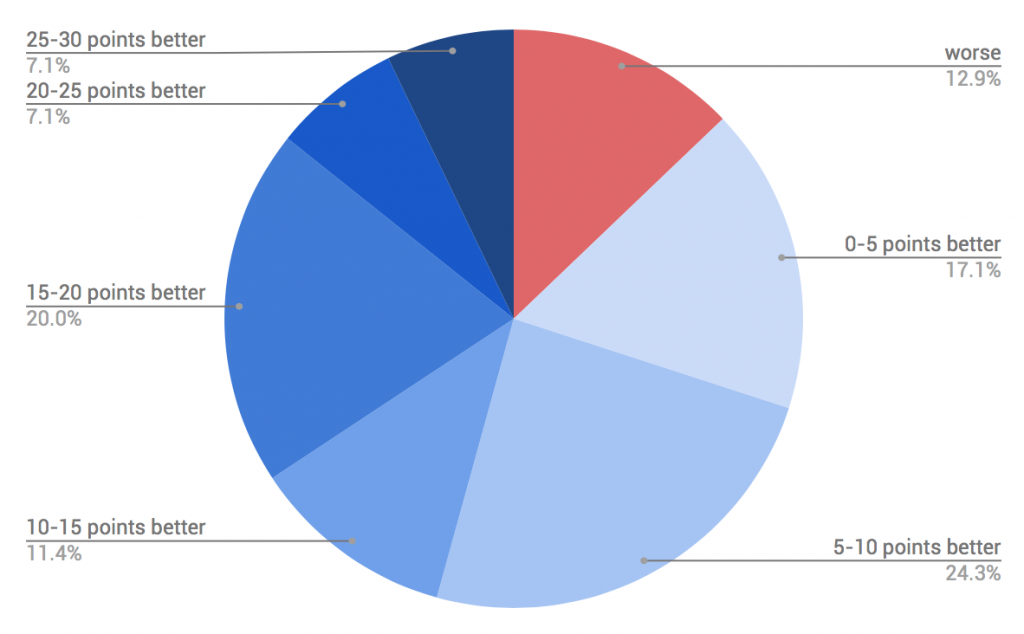Proof: the Progressive Movement Is Winning
On Tuesday night, we at The Incorruptibles, like everyone else we know, were glued to the election coverage news. I sat nursing a Guinness while I updated a spreadsheet I had created earlier that day. This spreadsheet includes all the progressive candidates that had been endorsed by Our Revolution, Democracy for America, or the Justice Democrats. As election results rolled out, we kept the list updated for all the people who had joined the spreadsheet after we posted it on social media. We have all read the big headlines and seen the maps. There was not a blue tsunami, but there was enough of a blue wave to flip the House. But there is more to learn from the results than the win-loss tally. If you’re on the progressive side of blue, there are outlets like The Young Turks or The Humanist Report that will list some specific wins. But it’s time to track all of the progressives that were running and how they did. Of the 74 progressives in our spreadsheet -- candidates for House, Senate, or Governor -- 26 of them won. That's a 35% success rate -- not bad, given that their opponents outspent them in almost all cases. This chart shows that most of those who lost did so because they were in districts that were already Republican strongholds. But we have done an extra bit of analysis from our spreadsheet that you won’t see in the big headlines, and it shows just how much progressives are winning. We asked a different question than whether progressives won in the traditional sense: are progressives doing better than their Democratic counterparts from 2, 4, or 6 years ago?We looked at the last election in each of these districts or states, and how much it leaned Democrat or Republican, and compared that to this year’s election. Out of 70 races, 63 of these progressive candidates received a higher percentage of the vote than their Democratic counterpart in the previous election cycle. (In four races we couldn’t calculate how many points better or worse the candidate did than the previous candidate, because three of the 74 races were in California between a Green Party candidate and a Democrat, and one was in Washington between two Democrats -- they have a top-two primary.) This means that our progressive candidates did better than their Democratic counterparts in the previous election cycle 90% of the time. This chart shows just how much better they did — more than one third did over 15 points better.
But we have done an extra bit of analysis from our spreadsheet that you won’t see in the big headlines, and it shows just how much progressives are winning. We asked a different question than whether progressives won in the traditional sense: are progressives doing better than their Democratic counterparts from 2, 4, or 6 years ago?We looked at the last election in each of these districts or states, and how much it leaned Democrat or Republican, and compared that to this year’s election. Out of 70 races, 63 of these progressive candidates received a higher percentage of the vote than their Democratic counterpart in the previous election cycle. (In four races we couldn’t calculate how many points better or worse the candidate did than the previous candidate, because three of the 74 races were in California between a Green Party candidate and a Democrat, and one was in Washington between two Democrats -- they have a top-two primary.) This means that our progressive candidates did better than their Democratic counterparts in the previous election cycle 90% of the time. This chart shows just how much better they did — more than one third did over 15 points better. These progressive candidates did on average 10 points better than Democrats in these districts two years ago. This led to six candidates winning in districts that were previously held by Republicans, but there’s more to the story: another nine candidates came within six points of winning. That might not change the composition of Congress yet, but it points to one or two trends that will change it in the near future: either candidates who are more progressive get more votes than centrist Democrats, or the country is becoming more blue.While we don’t know for sure that these candidates are more progressive than the Democratic candidates in these districts were two years ago, it’s extremely likely that they were. Almost all of the candidates endorsed by Our Revolution, Justice Democrats, and Democracy for America support Medicare for All, $15 minimum wage, debt-free college, and the rest of Sanders’ policy platform. It is very likely that these progressive candidates did better than the more centrist Democratic candidates this year.The other possible reason why these candidates did 10 points better than Democrats two years ago is that the electorate is becoming more blue. In general, lower turnout tends to elect more Republicans, and higher turnout tends to elect more Democrats (more progressives). Since presidential elections always have higher turnout than midterm elections (on average, 60% vote during presidential elections while only 40% vote during midterms), we are likely to see Democrats gain in 2020 over 2018. The fact that the most progressive candidates are doing much better this year than Democrats did two years ago means something is changing.We agree with many other progressives that the progressive movement will take more than one or two election cycles to win big at the ballot box. We can expect the districts listed here to continue to become more progressive, and for progressive candidates to continue to outdo more centrist Democrats across the country in elections to come.For more information and analysis about the progressive movement at the local, state, and national levels, please follow us on Facebook and Twitter.
These progressive candidates did on average 10 points better than Democrats in these districts two years ago. This led to six candidates winning in districts that were previously held by Republicans, but there’s more to the story: another nine candidates came within six points of winning. That might not change the composition of Congress yet, but it points to one or two trends that will change it in the near future: either candidates who are more progressive get more votes than centrist Democrats, or the country is becoming more blue.While we don’t know for sure that these candidates are more progressive than the Democratic candidates in these districts were two years ago, it’s extremely likely that they were. Almost all of the candidates endorsed by Our Revolution, Justice Democrats, and Democracy for America support Medicare for All, $15 minimum wage, debt-free college, and the rest of Sanders’ policy platform. It is very likely that these progressive candidates did better than the more centrist Democratic candidates this year.The other possible reason why these candidates did 10 points better than Democrats two years ago is that the electorate is becoming more blue. In general, lower turnout tends to elect more Republicans, and higher turnout tends to elect more Democrats (more progressives). Since presidential elections always have higher turnout than midterm elections (on average, 60% vote during presidential elections while only 40% vote during midterms), we are likely to see Democrats gain in 2020 over 2018. The fact that the most progressive candidates are doing much better this year than Democrats did two years ago means something is changing.We agree with many other progressives that the progressive movement will take more than one or two election cycles to win big at the ballot box. We can expect the districts listed here to continue to become more progressive, and for progressive candidates to continue to outdo more centrist Democrats across the country in elections to come.For more information and analysis about the progressive movement at the local, state, and national levels, please follow us on Facebook and Twitter.